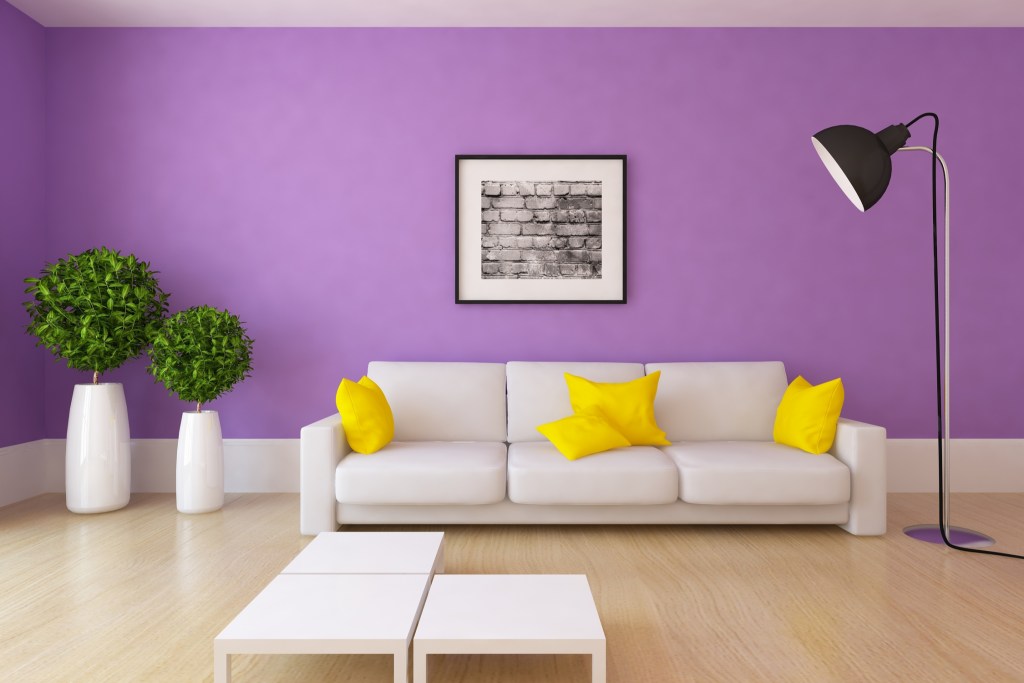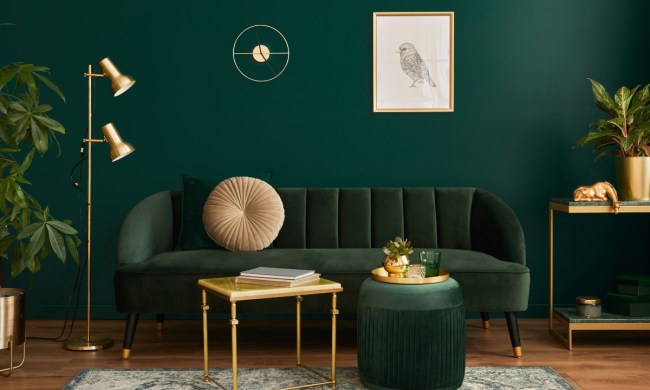Being surrounded with colors that make you happy is a part of day-to-day wellness. Most of us spend a lot of time at home, and if our environment reflects our inner state, the opposite can also be true. A happy color palette on your walls might be what you need to lift your mood.
As part of Modsy’s Interior Wellness Report, more than 1,500 people were surveyed to find out their takes on home design — from popular trends, to the design styles associated with happiness, to the happiest design colors. Before you consider going out to buy new interior paint, find out which colors are best when it comes to bringing you a feeling of contentment within your home. (Hint: Popular colors might not be the best suited to make a positive impact on your sense of well-being.)
The most popular colors in home design
The use of color has always been integral to creating overall moods and feelings. There is plenty of evidence that some colors make you happy, some colors have a more neutral effect, and others can leave you feeling tense or morose.
According to Modsy’s report, the top five most popular interior paint colors include white, green, black, and brown, with blue coming in first. If your home boasts a coastal style, you’re part of the 84 percent of people who choose blue as their favorite color when it comes to home design.
Are you a fan of the country, farmhouse, minimalist, or rustic aesthetic for your home? If so, you’re likely part of the 75 percent who prefer to paint their walls white. On the other end of the spectrum, maximalists or glam home design aficionados tend to navigate toward tones of pink or gold for interior paint.
Top colors that make you happy
Surprisingly, out of the five most well-liked paint colors, only three are considered part of the happy color palette: black, green, and white. In fact, the top two colors that tend to be associated with happiness — purple and yellow — are at the bottom of most people’s preferences. Purple and yellow may not be the cool kids when it comes to paint, but you might want to consider them for your well-being.
An impressive 95 percent of people who have painted their walls purple or yellow report being happy in their home space. Moreover, 98 percent of homeowners with violet walls say they feel a sense of safety within their walls, and 87 percent of people who used yellow report similar feelings.
So if you’re looking to promote a happier home that leaves a positive impression on you, definitely seek out purple and yellow paints. There’s probably a reason why Pantone’s 2022 color of the year, Very Peri, incorporates the best of everyone’s favorite color — blue — and purple, the happiest hue.
Other colors that bring positivity
While purple and yellow are the most positive options when looking for a color that boosts your mood, there are a few other colors that can impact your overall well-being positively. Black, green, and white are also in the top five colors linked with reported feelings of happiness. They’re great options if you don’t feel inspired by purple or yellow for your walls.
Colors linked to maintaining control
Does your home feel messy, hectic, or disorganized? With the unpredictable nature of the outside world, it is imperative to your mental well-being that you have a space to call your own and have some semblance of control over that space. The color of your interior can play a massive part in helping you feel more at ease. If you tend to feel overwhelmed with sensory overload, colors such as silver, orange, and green can all be used to help you feel more in control of your space, according to the report. With a greater sense of control over your own domain, it is easier to let go and be at peace within your home.
Colors associated with feeling safe
Feeling grounded in your own space is a must. Colors such as blue, brown, and white also promote a feeling of security within your home. Along with purple and yellow, painting your walls any of these colors will help create a safe haven that you’ll feel content to spend a lot of time in, according to the report.
While purple and yellow are at the top of a happy color palette for your home, other interior paint colors contribute to bringing positive feelings. Silver, orange, and green are associated with feeling in control in your home. Blue, brown, and white walls are good options if you want to focus on cultivating a sense of safety with your home design. Last but not least, black, green, and white are all interior paints that are reported to be linked with overall happiness and contentment.




